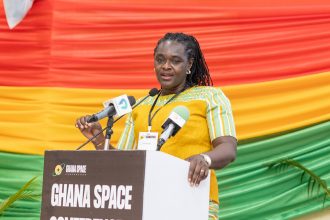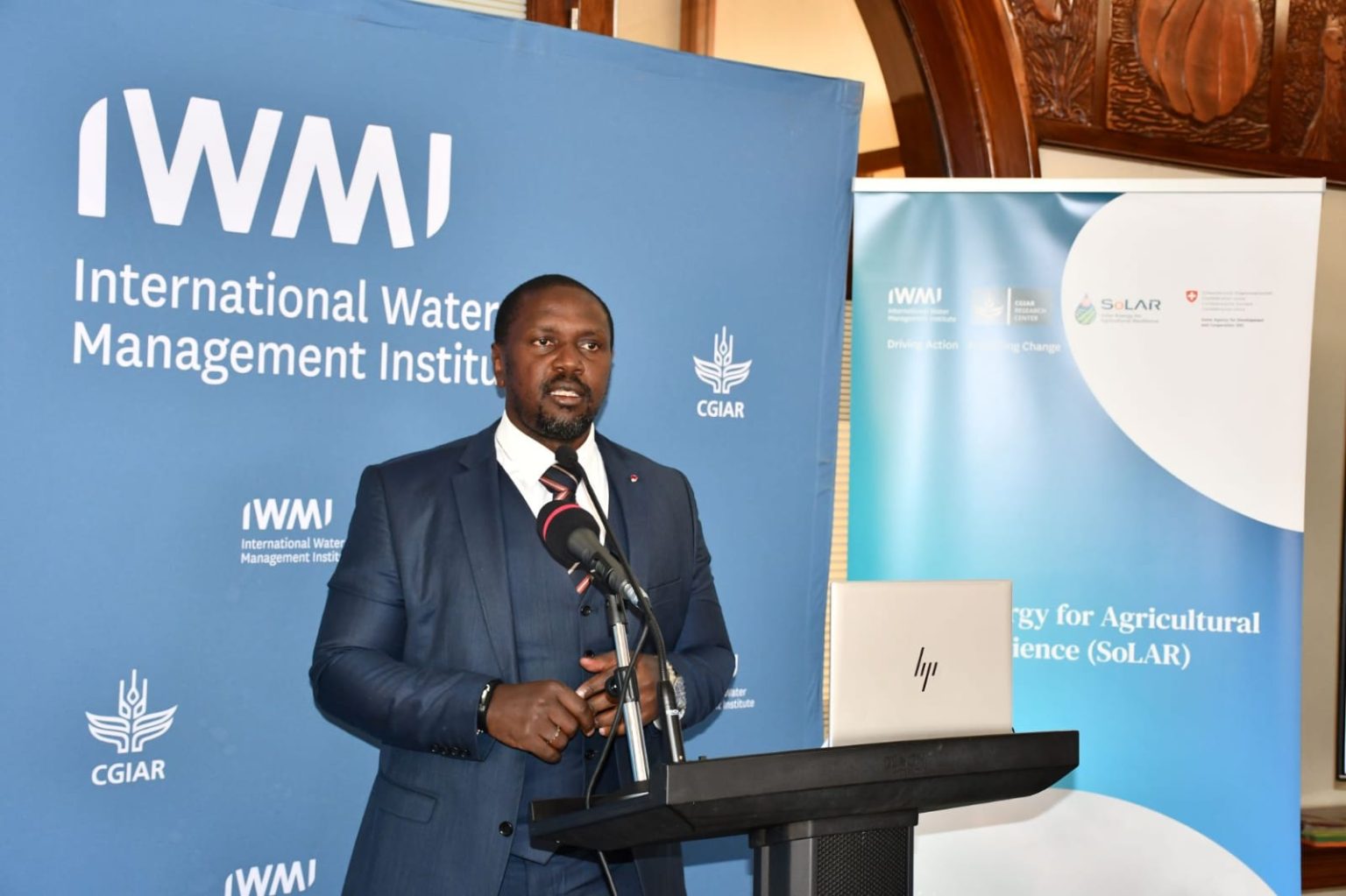By Lenah Bosibori
Kenya has launched the Solar Energy for Agricultural Resilience (SoLAR) Phase II Project, an initiative aimed at scaling up the use of solar energy in agriculture to boost food production and build resilience against climate change.
Speaking on Wednesday in Nairobi during the project’s inception workshop, Eng. Vincent Kabuti, Irrigation Secretary at the Ministry of Water, Sanitation and Irrigation, said the project would enable smallholder farmers to access affordable and sustainable irrigation solutions.
“From an irrigation perspective, this is very important because we can provide smallholder farmers with affordable options to lift and use water for agricultural production,” Eng. Kabuti noted.
Although much of Kenya is arid and semi-arid, hydrological zoning shows that nearly 89% of the land can support agriculture if water resources are harnessed. Yet, of the country’s 3.3 million acres of irrigation potential, only about 710,000 acres are currently irrigated.
According to Eng Kabuti, by supporting localized water harvesting and irrigation, solar energy can play a major role in unlocking this potential. “Rain falls in every part of the country, but without proper investment in water harvesting and storage, much of it goes to waste, said Eng Kabuti. “With the right infrastructure, Kenya can detain and use this water effectively to transform its food systems.”
The project, implemented by the International Water Management Institute (IWMI) with support from the World Bank and the Swiss Agency for Development and Cooperation (SDC), seeks to introduce solar-powered technologies along the agricultural value chain, including irrigation, cold storage, drying, and milling and agro-processing.
Building on Lessons from South Asia
SoLAR II builds on five years of work in South Asia, India, Pakistan, Nepal, and Bangladesh where Phase I proved that solar-powered irrigation reduces farmers’ dependence on rainfall, cuts crop losses, and creates new income opportunities.
According to Muluken Elias Adamseged, a researcher at IWMI, Kenya and Ethiopia will benefit from South-South learning, with experiences from South Asia adapted to local conditions. “Solar is not just about technology; it is about transforming agriculture and farmers’ livelihoods. It increases productivity, creates jobs, and strengthens resilience,” he said.
The government sees solar irrigation as a game-changer. Out of 7.4 million registered farmers, 5.4 million rely on rain-fed farming, leaving them highly vulnerable to erratic weather. With strong policies such as Vision 2030, the Bottom-Up Economic Transformation Agenda (BETA), and the National Irrigation Sector Investment Plan (NISIP), Kenya offers a strategic entry point to scale solar irrigation and agro-processing.
“We have strong political will and a vibrant private sector to help us achieve NISIP’s target of irrigating one million acres by 2030,” Eng. Kabuti noted, adding that coordinated action is needed to bridge policy gaps, expand financing, and raise awareness among farmers.
The USD 2.5 million program, running until December 2028, will also focus on ensuring women, youth, and disadvantaged groups gain equitable access to opportunities in solar-powered farming systems. Activities will include generating actionable evidence through solar suitability maps and frameworks to guide investment, unlocking finance through inclusive solutions, including innovative mechanisms such as a Solar4Africa fund and building farmer and institutional capacity via training and South-South collaborations. It will further lead to testing and scaling business models in “living labs” that co-design and validate agroecological innovations.
Dr. Inga Jacobs-Mata, IWMI’s Director of Water, Growth and Inclusion, emphasized the broader vision: “Solar energy has the potential to transform food systems, making them more sustainable, inclusive, and climate-resilient. Through SoLAR II, we will work hand-in-hand with governments, private sector actors, and communities to create the enabling environment that will allow these technologies to thrive at scale.”
Walter Kiprono, Regional Representative at GOGLA East Africa, added that solar-powered pumping and irrigation systems are already among the most established renewable energy solutions: “They offer scalable options tailored to a wide range of users, from smallholder farmers to large-scale commercial operations.”
The inception workshop brought together government officials, private sector leaders, farmer representatives, researchers, financiers, and civil society. Participants discussed ways to align policies, expand financing, and build technical capacity to accelerate solar adoption in agriculture.
By fostering stronger partnerships and integrating solar energy solutions into farming and food systems, SoLAR II aims to ensure that Kenya’s agriculture is not only more productive but also climate-smart, inclusive, and financially viable.




